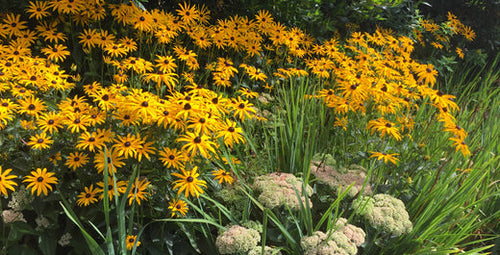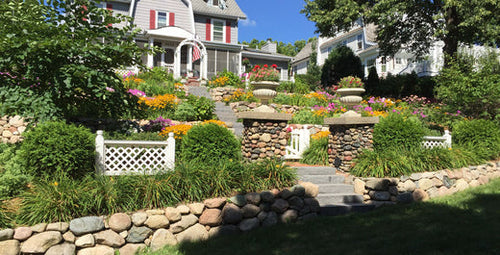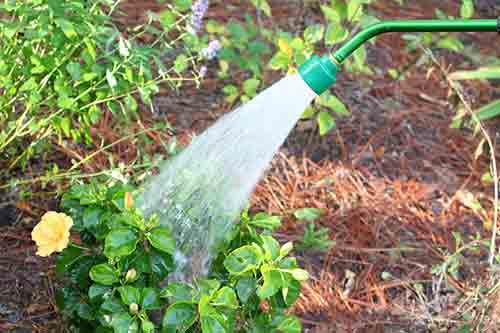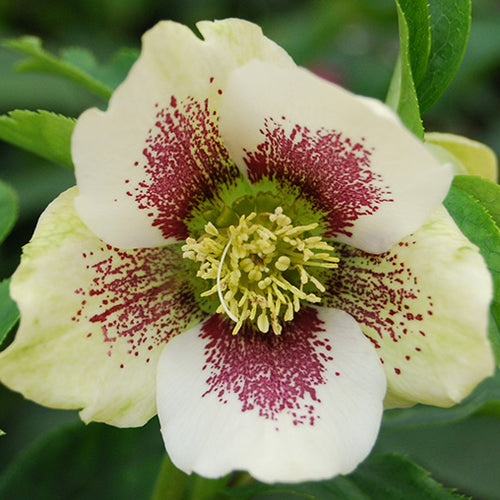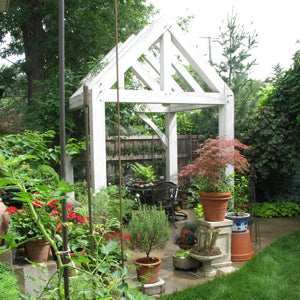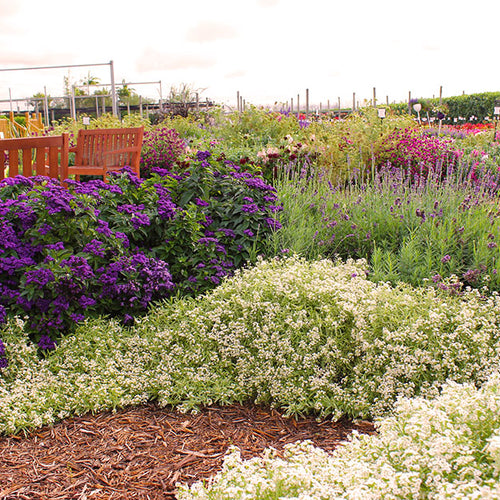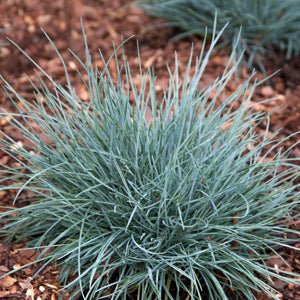 By Doug Jimerson
By Doug Jimerson
Add interest and color to your fall garden with ornamental grasses. These graceful beauties are a snap to grow and come in a wide variety sizes so there’s an option for even the smallest backyard. In fact, if you’re short on space you can even grow them in a container on your balcony or terrace.
I love to use ornamental grasses in my garden because they provide architectural interest, producing showy seed heads that look terrific even in the winter landscape. I’ve also used tall varieties that can grow 6 feet in height to screen a patio or camouflage an unsightly view.
Ornamental grasses are hardy perennials that grow best in a sunny spot that gets at least 6 to 8 hours of direct sunlight a day. Although they are drought resistant, most grasses appreciate a good drink if rainfall has been scarce. Over time, most ornamental grasses form thick clumps that you can divide to create new plants you can share with family and friends.

Ornamental grasses also make great landscape plants because they are generally rabbit and deer resistant and they mingle well with other fall bloomers such as Russian sage, Joe-Pye weed, Black-eyed Susan, Coneflower, Sedum, and Helianthus. Just be sure to choose an ornamental grass that’s hardy in your region. Some prefer milder climates and others can handle cold winters with no problem.
Here’s a quick look at six of my favorite grasses.
Pink Muhly Grass: If you travel through the South in the fall, you can’t miss Purple Muhly Grass. This rugged native grass is used in both commercial and residential applications. The plants form rounded, arching blue green leaves throughout the summer and when fall rolls around each plant sends up dozens of lovely, pink, feathery flowers. Zones 6-9
Miscanthus (top photo): For a big, bold look you can’t beat Miscanthus grass. This tough-as-nails perennial forms thick clumps of narrow green foliage topped with a silvery crown of fluffy seed heads in the fall. Most varieties of Miscanthus grow between 4 and 6 feet tall and several have variegated leaves. Zones 5-9
Little Bluestem: An American native, Little Bluestem thrives in hot, sunny places and is prized for it’s pretty blue-green leaves that turn spectacular shades of red and purple in the fall. Little Bluestem grows 3 to 4 feet tall and is one of the best grasses for northern gardens with heavy clay soil. Zones 3-8

Switch Grass: Super hardy, Switch Grass is a colorful American native that thrives in heat, drought, and poor soil. In the spring it produces bright green leaves elegantly brushed with red, followed by reddish-pink flower heads in the summer and in the fall, the foliage turns into glowing shades of red and purple. Switch Grass grows 3 to 4 feet tall and wide. Zones 4-9
Feather Reed Grass (middle photo): Prized for its upright habit, Feather Reed Grass produces dark green foliage topped with creamy flower heads in late summer. This rugged grass is super easy to grow and mixes well in the perennial border. The leaves turn a pretty tan color in the fall, providing winter interest in the garden. Zones 5-9
Mondo Grass (bottom photo) : One of the best ground covers for sunny or partially sunny locations, Mondo Grass forms tight clumps of dark green leaves that retain their color all year long. The plants produce spikes of blue flowers in the summer followed by blue-black berries in the fall. Mondo grass grows 12 to 18 inches tall. Zones 6-11
Read more about how ornamental grasses make your landscape and garden better.










